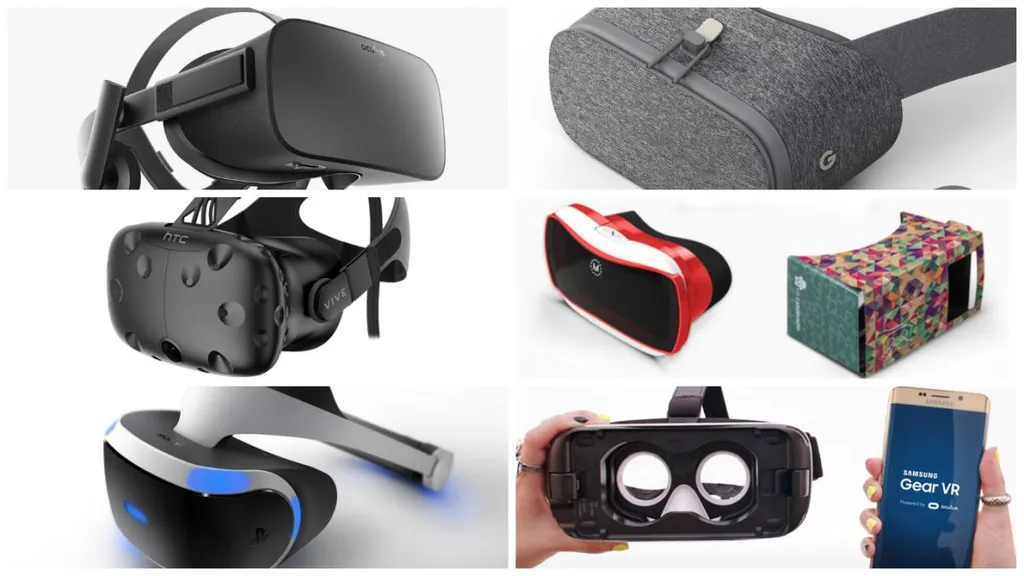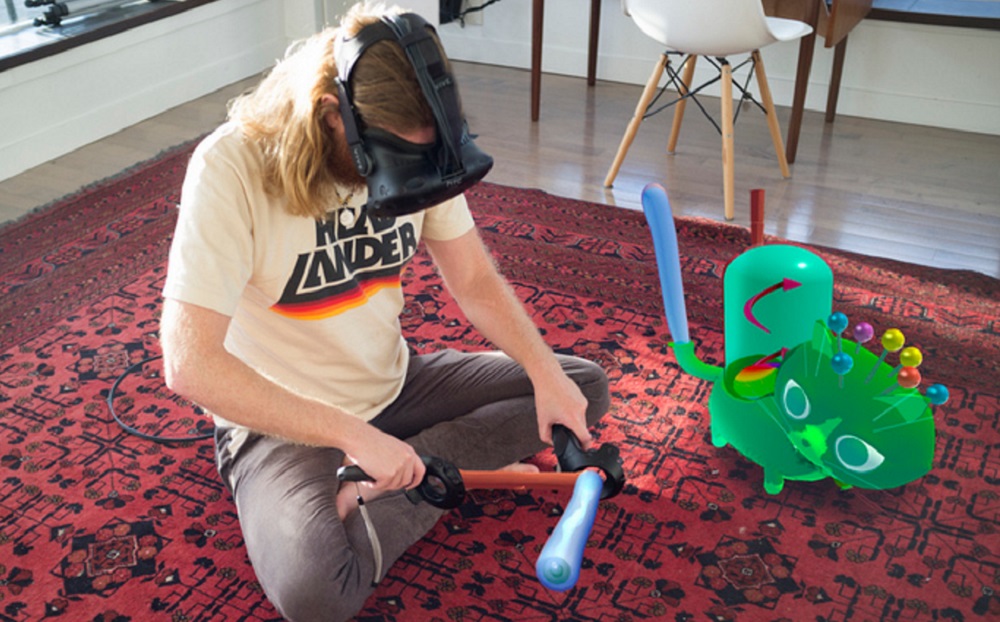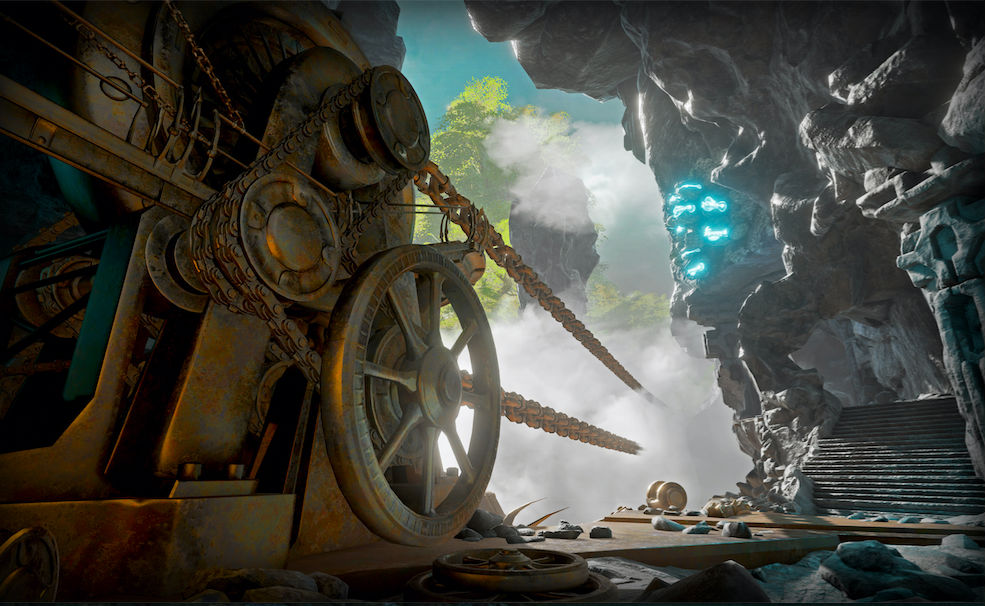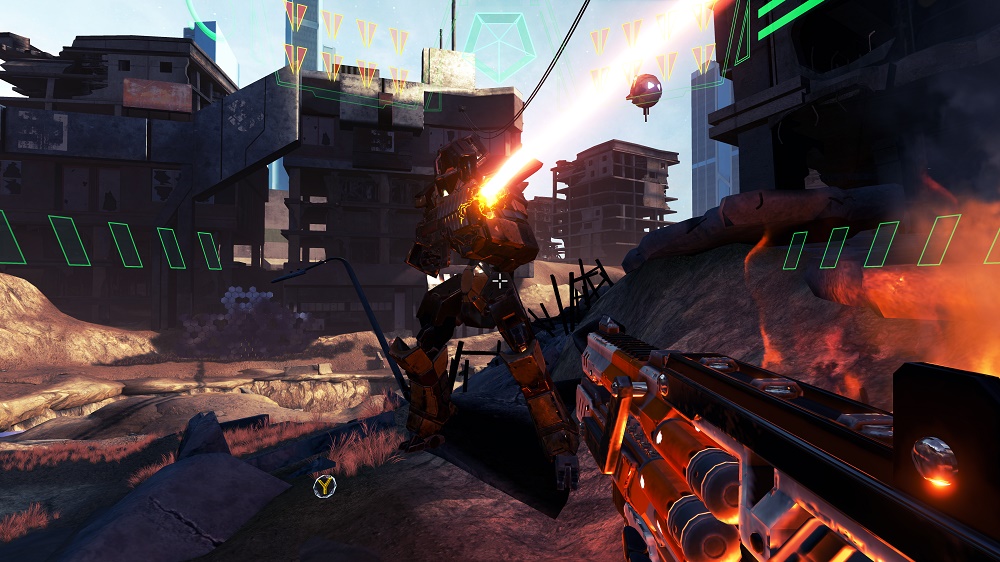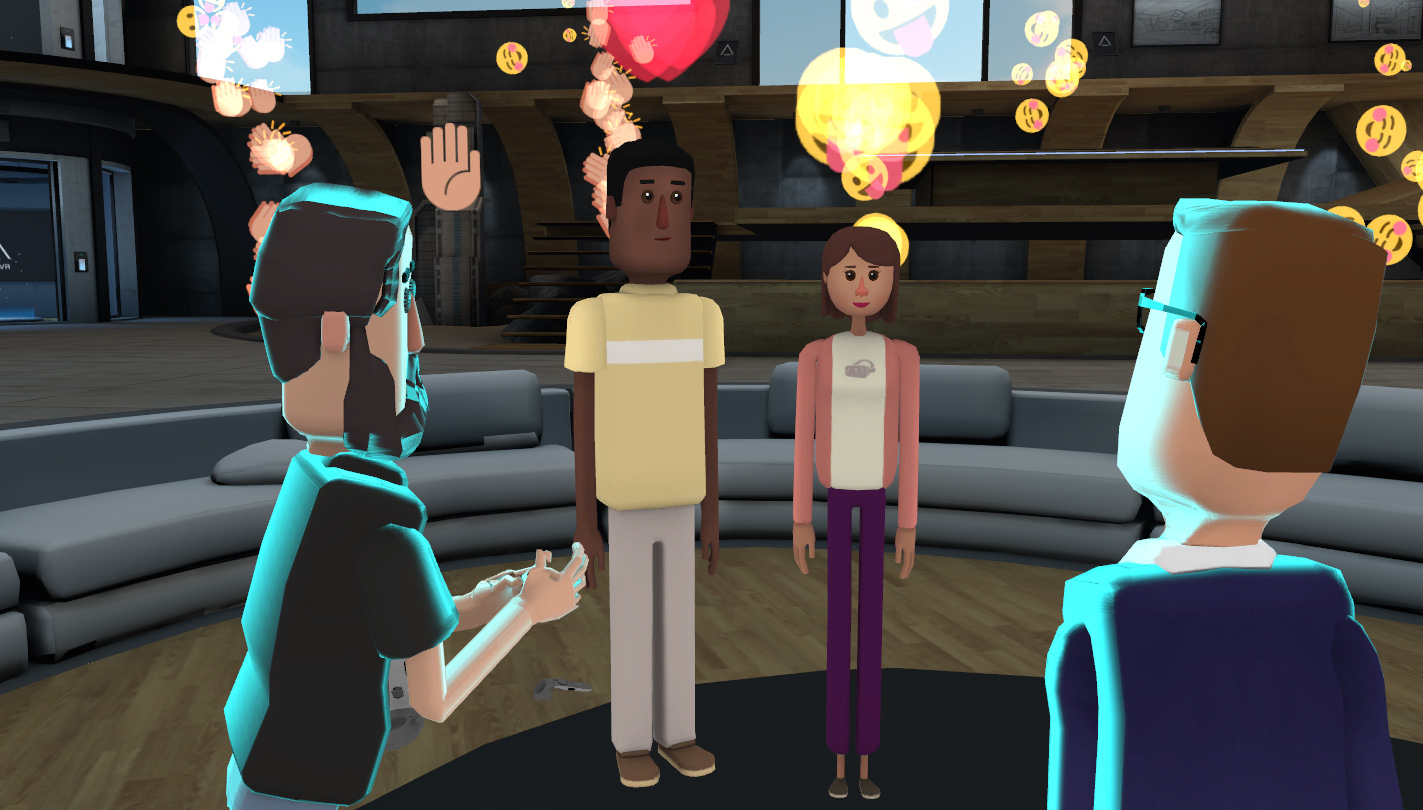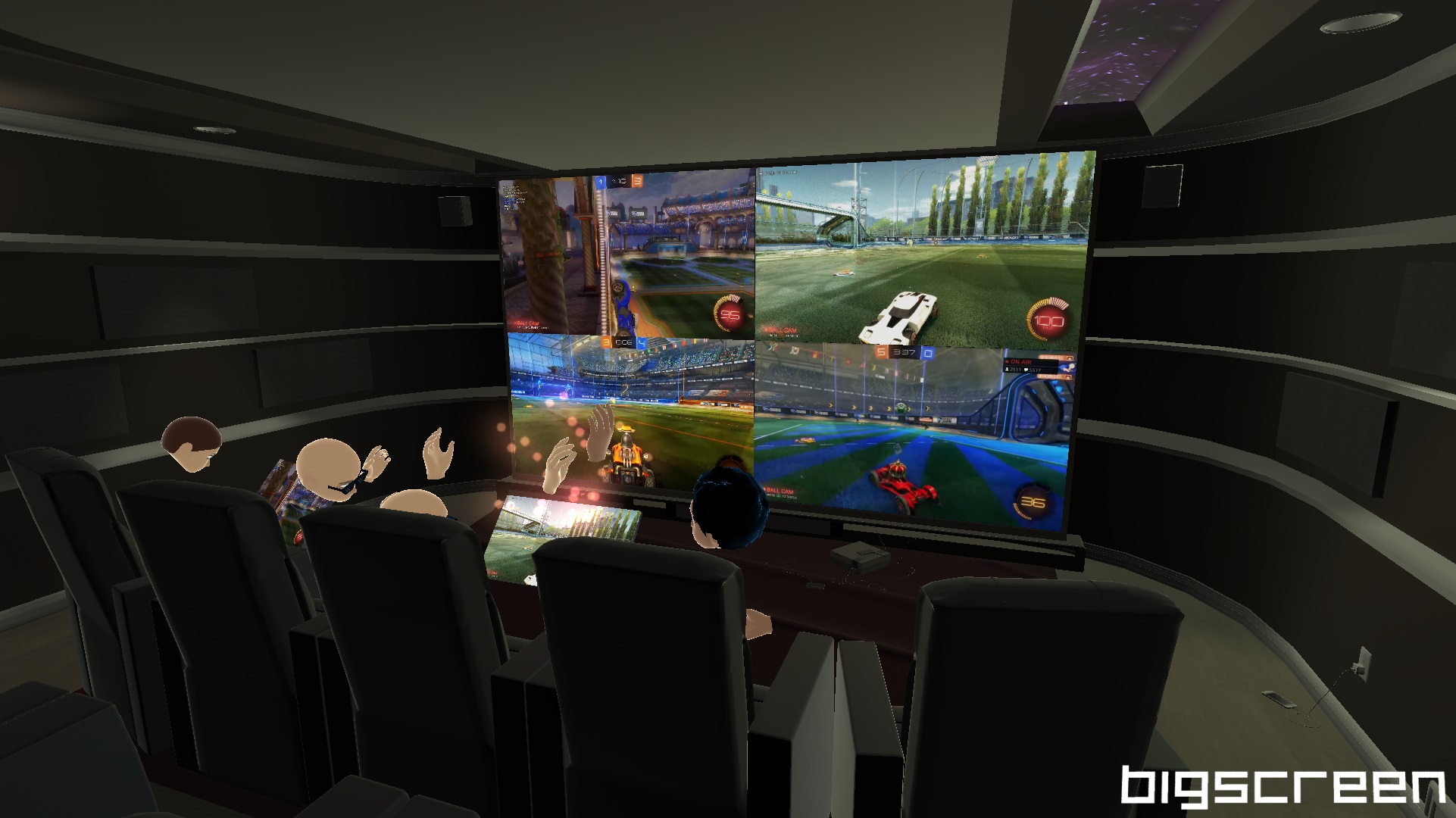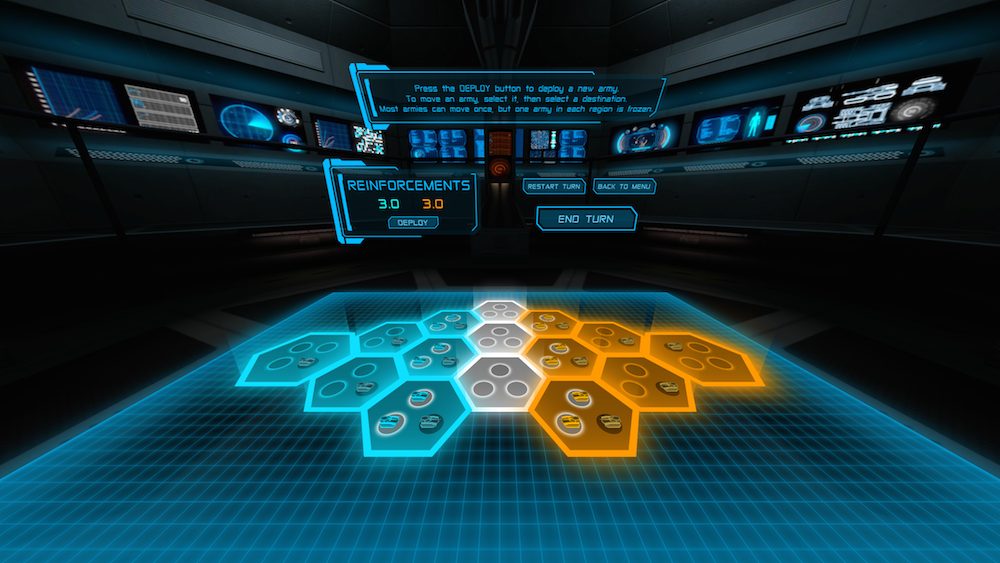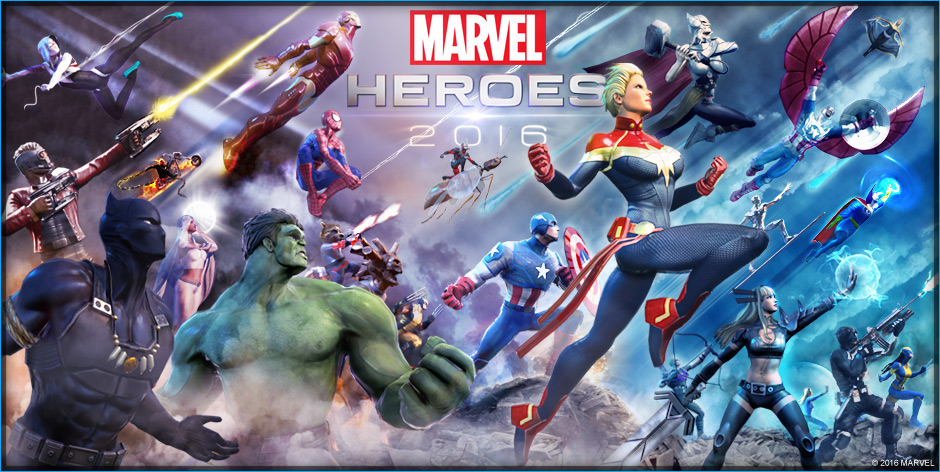Unless overuse of VR headsets has granted them telepathic super powers, it would have been pretty hard for any one person to predict everything that happened to the VR industry in 2016. We’ve recapped what happened to each of the major headsets last year (for Rift, Vive, and PS VR), and it was pretty exhausting since the year as a whole was full of so much news and so many awesome experiences. As we look forward to 2017 then, we’ve reached out to a bunch of industry experts and insiders to get their views on where we’re headed over the next 12 months.
2016 provided hints of where Facebook, HTC, Sony, Google, and more will take their headsets in the near future, but where does the industry’s best and brightest think we’ll end up this time next year? With CES, the year’s first major event, now in the books, let’s hear from some those that work with VR itself about what happens next.
We asked all of these developers the same four questions:
1) What do you think will happen to the VR/AR market in 2017?
2) What NEEDS to happen to the VR AR market in 2017?
3) What will be the big breakthroughs and innovations of 2017?
4) Will 2017 finally be the “year of VR?”
Colin Northway, Co-Founder at Northway Games (Fantastic Contraption)
1) I think the PC VR market will continue to grow steadily. I personally think its growth will be at pace with how often people upgrade their computers. When most people own a VR capable computer most people will own a VR rig. So we have a ways to go still.
I think it’s great to have some breathing room actually. We’re still figuring out what we can do with VR and how to design for it. It’s nice to have this incredibly savvy audience who is excited about innovation and experimentation, we’ll figure this VR thing out together so it’s ready when the masses can get their hands on it.
2) 2017 needs to be about experimentation, just like 2015 and 2016. We need to keep pushing out in weird directions and see what’s out there. This technology has opened up a galaxy of new possibilities, every VR designer I know is bursting with ideas, we need to grab our machetes and get exploring.
3) If I could tell you what the breakthroughs would be then I’d have already made them! They are going to come from unexpected places and they are going to be software not hardware. We are far far away from grappling with what has been made possible by modern VR. Wireless headsets and eye tracking and whatever aren’t going to be game changers, we already have the hardware to change your life. We just haven’t figured out quite how to do it yet.
Also higher res displays would be really nice.
4) I don’t think at the end of 2017 there will be a virtual reality headset in every household. But I do think people with VR headsets are going to be blown away by what’s coming, myself included.
Rand Miller, CEO at Cyan Worlds (Obduction, Myst)
1) 2017 will be a vital year for VR/AR. To support vibrant and creative gaming development the market will begin the transition from niche to mainstream.
2) VR/AR NEEDS to make the transition to mainstream – that means lower barrier to entry (lower cost and easier setup).
3) The obvious evolutionary breakthroughs – higher rez displays, lighter headsets, better hand controls, lower prices, etc.
4) 2017 will be an exciting beginning of the transition to virtual reality, but it will take another year to start steam-rolling.
Jon Hibbins, Co-Founder at Psytec Games (Windlands, Crystal Rift)
1) I believe the virtual reality market will continue to have steady sales reaching over 2 million HMD’s between Sony, HTC and Oculus. Software Sales will continue to be Steady, new peripherals will likely appear on all 3 platforms.
2) Costs need to be reduced dramatically. Investment in quality software titles needs to be strong to help hardware gain growth.
3) I don’t predict any major breakthroughs in 2017, improvements will be good of course. I don’t expect any new hardware iterations to be released, just teased, perhaps some new contenders may get interesting and push the specifications.
4) VR is here, 2016 was the year of VR availability. 2016 should take the year of VR for this alone, I think every year is now a VR year, it’s here to stay.
Kerry Ganofsky, CEO at High Voltage Software (Dragon Front, Damaged Core)
1) As hardware costs come down and processing power increases (gotta love Moore’s law!) VR will reach an even broader audience. It’s safe to say that consumer interest in the VR and AR markets will continue to rise in 2017 for both PC and mobile platforms.
I think what we observed in 2016 was the adoption Catch-22 that we so often see with new technology. Developers needed players to make worthwhile investments in robust content, and would-be players needed content to invest in the technology. Content investment goals by hardware developers like the pledge made by Oculus at their Oculus Connect 3 keynote in October will encourage software companies like High Voltage to fill the end-user’s need for quality content.
2) As with any platform, quality content and more robust features (Oculus Avatars, Parties, Rooms, etc.) will help drive adoption and add depth to the virtual reality experience in 2017. Considering the multitude of other gaming options available to consumers who are not yet VR-inclined, hardware and software developers will need to be more cognizant than ever of what will entice new users.
We’ve seen this kind of natural quality progression before in the video game industry. The difference now with VR is that it’s not as feasible for developers to experiment and fail as it was at the dawn of game development. There is a rulebook that has been slowly pieced together since Pong. It’s a frame of reference for both developers and gamers. However, because virtual reality uses sensory input and output methods that are entirely new to users (360 environments, haptic feedback and input, 3D Sound, etc.) much of the rulebook has to be rewritten to accommodate the medium.
3) We’ve already seen industries beyond entertainment begin to adopt the technology. Without many of the sensory limitations other consoles experience, virtual reality is a powerful tool that broadens our perception.
In 2017 the biggest breakthrough that needs to happen is that virtual reality needs to attract casual users. I think people might be turned off by VR due to general misunderstanding of what it provides, a lack of knowledge in minimum PC requirements, or that feeling of having to buy multiple things just to play VR. As more and more people with perspective separate from the hardware and software development world have easy access to VR, truly innovative ways to use the tool will emerge. It will be fascinating to see how patients, students, or anyone who does not consider themselves “tech-savvy” will shift software development trends, especially now that touch controllers and other haptic feed-back mechanisms can eliminate barriers for people unfamiliar with less-intuitive input methods.
4) 2017 will certainly be a memorable year in VR, and we’re as excited as everyone else to see what it will bring!
Paul Colls, Creative Director at Fierce Kaiju (Viral)
I believe and hope that we will begin to see virtual reality going more mainstream. I expect we’ll see more advertising, such as ads during large sporting events and more appearances on major TV shows, like we’re starting to see now with Conan O’Brien and Jimmy Fallon etc.
There will be some great surprises in the form of new content from developers at large gaming events such as E3, Gamescom, PAX and EGX. Perhaps crucially I expect that we’ll see major publishers taking bigger bets on virtual reality content.
We’ve seen the likes of EA, Activision and 2K begin to dip their toes in, which seemed to be relatively well received. We had Ubisoft release the excellent Eagle Flight to what was largely a very positive reception and we’re starting to see decent money being made by some companies in virtual reality.
As a gamer and developer I’m tremendously excited to see what happens when the big budgets come in and production values go up, I believe that VR content will just get stronger and stronger when this happens, you only have to look at the likes of The Unspoken and Robo Recall to see what happens when funding and support gets put behind good teams.
I also expect we’ll see more Indie devs getting into virtual reality, with experienced developers breaking out from big studios and more great talent emerging from Higher Education. I do hope that we start to see more meaningful, lengthy games. We’ve had some great content so far, but I’d like to see content that I can escape to for a few hours or more, some meaty single player experiences would be welcome.
Interestingly we’re starting to see a vocal kickback against methods of locomotion in VR, like teleportation. Developers and platform holders favour more comfortable methods for a number of valid reasons that are well documented. But we can’t ignore that a significant section of VR gamers seem to desire solutions more akin to traditional console or PC control methods. So with that in mind I expect to see new ideas in and around VR locomotion.
Whilst I’m largely positive for what 2017 will bring for VR, there will be downsides. Unfortunately I think we’ll see more casualties like we saw with Vrideo at the back end of 2016, my hope is that such news is infrequent.
Eric Romo, CEO at AltspaceVR (AltspaceVR)
1) Although often grouped together, VR and AR are two separate technologies that provide different functions. While there may be some mixed applications, VR and AR will likely continue to develop for separate applications where each provides its particular value. For VR, we think the core of this will be helping people communicate and feel like they are together.
2) For VR, equipment needs to be more consumer-friendly and affordable, helping adoption reach a critical mass and drawing talent to create content specifically for this medium. People need to see VR as a completely new medium, i.e., not in terms of current video, video chats, or social media.
3) The adoption of Daydream across major mobile devices will be a breakthrough in accessibility and will spur adoption. All-in-one designs will begin to achieve a level of ease-of-use that will let people integrate VR into their everyday lives. Increased ability to track human behavior, such as expressions and eye movements will have huge impact on avatar effectiveness and the ability to connect with others in virtual reality.
4) By the end of 2017 we may be able to get hardware ease-of use and accessibility, content development, and adoption to a point that would signal that we have passed from early, early adoption to regular, early adoption. Early, early adopters are a relatively small group of experimenters who are fascinated with VR technology and highly motivated to experience it. There is a much larger group of high end consumer electronics users who will adopt as hardware becomes easier to use, they discover content and activities that interest them, and more of their friends have access to VR. Because applications are so important, we may not have a “year of VR” but may instead have “the year of musicians giving concerts in VR” and then, “the year of medical procedural training in VR”, and so forth as applications that matter to people become enabled by virtual reality.
Darshan Shankar, CEO at Bigscreen (Bigscreen)
1) I expect the following in 2017: Affordable mid-tier virtual reality headsets ($300), Gen 1.5 (a refresh) of high-end $800 VR headsets. Dozens of cheap mobile VR headsets, and the first 4K headset prototypes. Mobile VR will finally get positional tracking.
2017 is too early for AR, but I bet Apple will announce something. Microsoft will bring affordable virtual reality headsets to the PC and Xbox One
2) VR and AR need cheaper, higher resolution headsets and non-gaming software that’s more compelling for mainstream users
3) I expect a breakthrough in inside-out camera-based positional tracking
4) 2016 was the first year consumers could buy high-quality high-end VR headsets. 2017 will expand on that, making that high-end experience more affordable and accessible to more consumers. However, I still don’t expect more than 10-20 million VR users until 2018. VR and AR will remain fairly small with a few million monthly active users until 2018.
Bryan Chu, VP Marketing at VREAL (VREAL)
1) VR/AR will continue to experience steady growth in 2017 driven by a few key factors. Updates and innovations to existing hardware, such as the release of the Oculus Touch controllers seen this year, will improve the overall user experience. New SteamVR hardware, and lowered price points for both headsets and PCs will also grow the PC VR market. On the console side, as PS4 Pro gains traction we will see more PSVR units and steadily improving attach rates for that peripheral. Also, based on MSFT’s announcements in this last year, we should expect to see their headsets in wide commercial release.
On the software side this will be coupled with better and more polished virtual reality experiences as products delayed in development that missed the initial ship windows will hit the market. Better experiences coupled with growing install bases will allow for more viable businesses, and also reach the critical mass required to establish new franchises.
2) [Answered implicitly above]
3) For hardware, we will see the first wireless headsets which will allow true “holodeck”-like VR. We will also see improvement to form factor issues such as weight and comfort along with improved displays that allow people to use virtual reality in more meaningful ways.
4) I think “The Year of virtual reality” may underestimate the true impact VR will have. Truly massive shifts happen like a rising ocean tide. Where entire industries and ways of thinking are altered so that the world that existed before is unimaginable and what’s “possible” gets redefined. What we’re experiencing now, this is what it feels like when history is being made.
E McNeill, Independent Developer (Darknet, Tactera)
1) I expect the VR/AR market to grow and to gain momentum, but still at a slower pace and lower level than most enthusiasts hoped for. We’ll hear some people claim that VR flopped or is dead in the water, but in general things will get better.
2) It needs to be propped up by Oculus, Valve, Sony, and Google. They’ve done a great job so far, but I think they need to keep going a little while longer before the market finally reaches liftoff.
3) I’m expecting the big breakthroughs to come from the software side of things, as game developers figure out what’s most fun in VR and as larger projects mature. For example, the hotly anticipated VR strategy game Skylight is coming to Gear VR on January 12th! That’ll be a big one, I’m sure.
4) No. Either the “year of VR” already happened, or it will come later than 2017.
Kimberly Unger, Producer at Gazillion Entertainment (Marvel Heroes and Unannounced Title)
1) I think we are going to see slow, steady growth in 2017, but not the hockey-stick everyone’s looking for.
2) We need more market penetration for both tethered VR and mobile VR. It’s not just going to be about dropping prices on equipment, but it’s going to have to involve marketing pushes that describe the “VR lifestyle” in glowing terms.
3) I think we will finally get haptic feedback for virtual reality sorted out. It’ll show up first for room-scale VR, but versions for mobile won’t be far behind. Mobile spatial tracking just hit the market, so I think AR is finally going to get its legs and give VR run for it’s money
4) Almost there but I don’t think 2017 is going to be the big surge, I think we’ve got at least another year getting consumers comfortable with VR if we really want it to stick.
OK, on to my personal opinions:
This is going to be the first full year with console-scale VR. That’s going to be a huge bonus. We now need to be sure that there is enough VR-only content to keep the players satisfied. I think this year there is going to be a fight between cinema and games for ownership of the term VR. Right now when you talk to most average consumers and you use the term VR, their first thought is movies, not games. IMAX is going to bring VR theatre experiences online this year, which means that will be the touchpoint for VR for most of the population.
Once you put on a VR headset, you could care less how stupid you look. This matters. The more people try VR, the more normal it’s going to seem. People aren’t going to look at someone wearing a headset and go “wow, what a dork”, instead they are going to look and remember their own last great experience.
Contributions to this story were made by Staff Writer Jamie Feltham.

